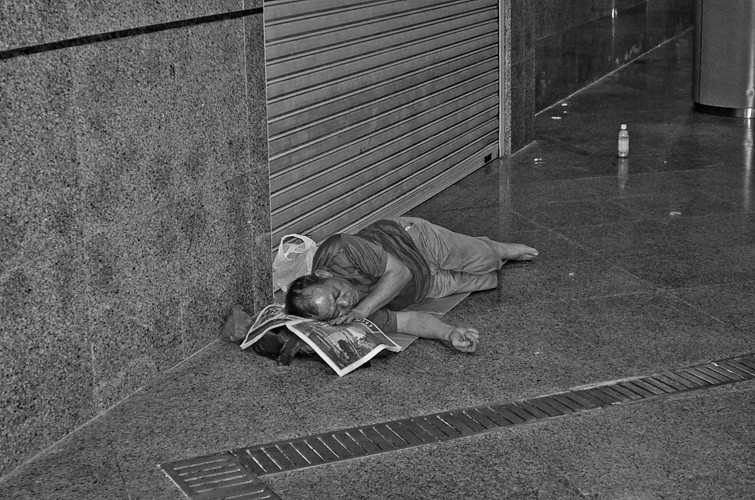Homeless among Singapore's skyscrapers: from night shelters to inclusion
Nine people per 100,000 are homeless in the city-state, the crossroad of Southeast Asia, a small number that jars, however, with the country’s widespread well-being and prosperity. The challenge is to go from temporary housing to structural solutions that reduce stigma and ghettoisation. Religious and non-religious organisations, including Catholic Welfare Services, are committed to solving the issue.
Singapore (AsiaNews) – While the number of homeless people in Singapore is small, it is significant in relation to the population, and represents a test for the authorities, and a field of action for the charitable work of the archdiocese led by Cardinal William Goh.
Given the ethnic make-up of the city-state on the Strait of Malacca and its social and economic dynamics, the reality of homeless people is mostly hidden and the people involved are certainly less protected by the government despite its resources and capabilities.
The homeless population is estimated at 530 people, almost half of that during the COVID-19 pandemic. This means that nine residents out of 100,000 (the population is about six million) do not have stable and, above all, adequate housing for their specific conditions.
However limited the number, it is at odds with the image of prosperity and shared well-being of a rule-abiding society focused on productivity. Yet, their presence is not invisible, far from it.
While some Singaporeans view with a certain discomfort the traces of homelessness in the city’s parks, overpasses, or sites that provide temporary shelter, this reality requires more complex action, far beyond the occasional provision of accommodation.
Several philanthropic organisations, public and private, mostly members of The PEERS network, offer shelter and assistance to homeless people.
The Housing and Development Board is developing types of housing suitable for single people with cohabitation difficulties that could also be used for homeless people, either in total autonomy or in shared services.
The primary objective identified by those who have looked at the situation on the ground is to avoid isolation and ghettoisation.
At present, the facilities providing temporary accommodations are mainly overnight shelters offered by religious and non-religious organisations, like Catholic Welfare Services.
However, the lack of alternatives for permanent residence often turns temporary shelters into long-term solutions, despite the rudimentary services provided.
As the Senior Parliamentary Secretary for Social and Family Development Eric Chua told parliament last month, about 60 per cent of the 720 beds available at Singapore’s seven transitional shelters are regularly occupied for an average of about nine months.
For the authorities, such facilities could provide permanent solutions if adequately equipped without overcrowding.
This could be easily achieved, and would prevent social stigma and allow positive cohabitation with the direct involvement in management by the interested parties.
Several service providers dedicated to homeless people have already taken action towards this goal, including New Hope Community Services and, again, Catholic Welfare Services.
30/05/2022 16:38







.png)










